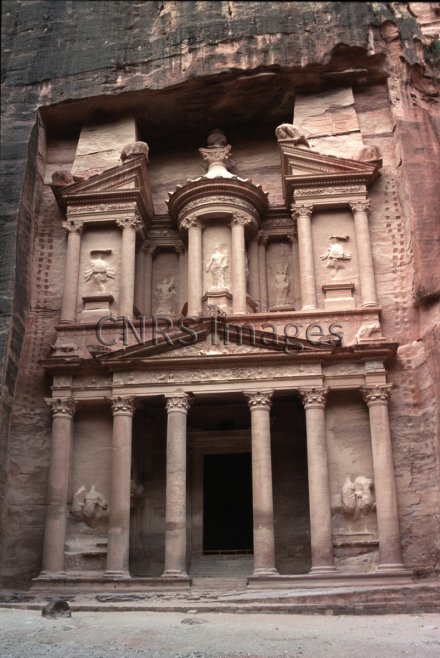Production year
2003

© Laïla NEHMÉ/CNRS Images
20130001_0684
Pétra (Jordanie), capitale des Nabatéens. Ce tombeau rupestre est le monument emblématique de Pétra. Il s'agit de la Khaznah, "le trésor", ainsi nommée car les bédouins pensaient qu'un trésor était caché dans la "tholos", l'urne centrale au sommet du monument. Sa façade mesure 25 m de large et près de 40 m de haut et elle est composée de deux registres superposés, abondamment décorés de reliefs (Amazones, Victoires, Dioscures). Le monument a probablement été taillé durant le règne de l'un des principaux rois nabatéens, Arétas IV, dans la première moitié du Ier siècle apr. J.-C. Il porte le n°62 dans l'Atlas archéologique et épigraphique de Pétra (Légende L. Nehmé, CNRS).
The use of media visible on the CNRS Images Platform can be granted on request. Any reproduction or representation is forbidden without prior authorization from CNRS Images (except for resources under Creative Commons license).
No modification of an image may be made without the prior consent of CNRS Images.
No use of an image for advertising purposes or distribution to a third party may be made without the prior agreement of CNRS Images.
For more information, please consult our general conditions
2003
Our work is guided by the way scientists question the world around them and we translate their research into images to help people to understand the world better and to awaken their curiosity and wonderment.